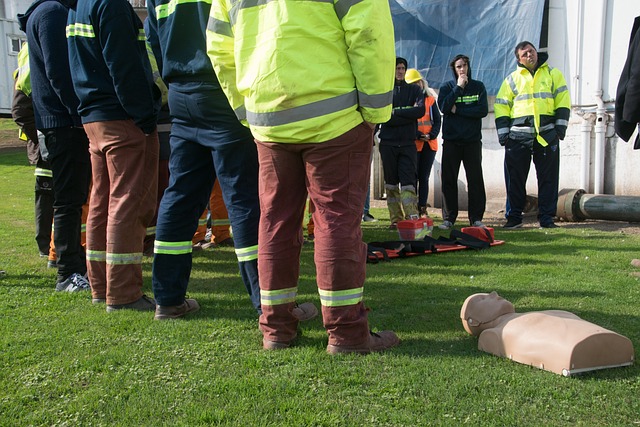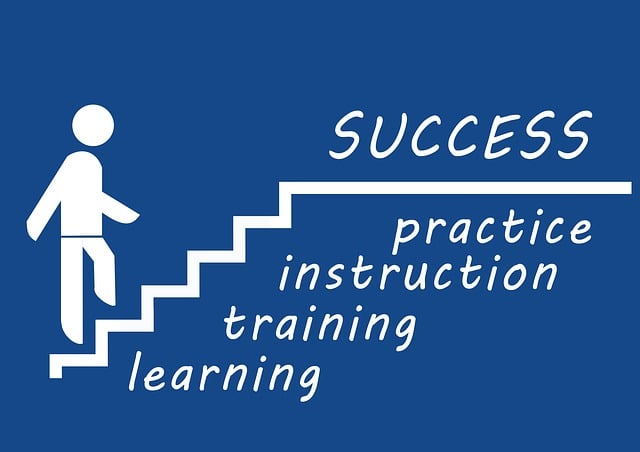The 5S methodology is a Japanese lean manufacturing practice that transforms cluttered workspaces into organized, efficient environments through five key steps: Sort, Set in Order, Shine (Clean), Standardize, and Sustain. Comprehensive 5S training equips employees with skills to declutter, organize tools, maintain cleanliness, and establish standardized procedures. Implementing 5S training enhances productivity, reduces waste, fosters efficiency, and improves safety by streamlining workflows and minimizing clutter. This structured approach optimizes workflow efficiency, boosts morale, and provides a strategic advantage in today's competitive business landscape. Continuous commitment to improvement is required for sustained success.
“Transform your workspace into a productive oasis with the powerful 5S methodology. This article guides you through the essential steps of implementing a structured organization system, beginning with understanding the core principles of 5S. We’ll explore ‘Sort’ as the first step towards decluttering and prioritizing, followed by ‘Set in Order,’ where we establish systems for seamless workflow. Learn how 5S training fosters continuous improvement, ensuring long-term organizational success and enhancing overall efficiency.”
- Understanding the 5S Methodology: A Foundation for Workplace Organization
- The Role of Training: Implementing 5S in Your Organization
- Defining 'Sort': Decluttering and Prioritizing for a Productive Environment
- 'Set in Order': Creating Systems for Efficient Workflows
- Sustaining 5S: Continuous Improvement and Long-Term Success
Understanding the 5S Methodology: A Foundation for Workplace Organization

The 5S methodology is a powerful system for transforming chaotic workspaces into organized, efficient environments. This proven approach, rooted in Japanese lean manufacturing practices, stands for Sort, Set in Order, Shine (Clean), Standardize, and Sustain. Each step builds upon the previous one, creating a foundation for workplace organization that goes beyond simple decluttering.
5S training equips employees with the knowledge and skills to identify unnecessary items, organize tools and equipment for easy access, maintain cleanliness through regular ‘shining’ sessions, establish standardized work procedures, and continuously strive for improvement. By embracing this methodology, businesses can enhance productivity, reduce waste, and foster a culture of order and efficiency across all departments.
The Role of Training: Implementing 5S in Your Organization

Implementing a structured workplace organization system like 5S requires proper training for all employees, ensuring everyone understands and embraces the methodology. 5S training equips workers with the skills to visually manage their workspace, organize items according to specific principles, and maintain order through disciplined practices. This empowers them to take ownership of their work areas, fostering a culture of efficiency and continuous improvement.
During training, employees learn about the core concepts of Sort, Set in Order, Shine (cleanliness), Standardize, and Sustain. They practice identifying unnecessary items, organizing tools and materials logically, maintaining cleanliness, establishing consistent procedures, and implementing ongoing quality checks. This systematic approach not only streamlines workflows but also enhances safety by reducing clutter and improving accessibility.
Defining 'Sort': Decluttering and Prioritizing for a Productive Environment

At its core, ‘Sort’ is a fundamental pillar within the 5S training framework, designed to create a decluttered and organized workplace environment. It involves systematically categorizing items, discarding unnecessary ones, and prioritizing those essential for daily operations. This process goes beyond mere aesthetics; it significantly enhances productivity by minimizing distractions and streamlining workflows.
Effective sorting begins with a thorough understanding of the ‘five S’ principles: Sort, Set in Order, Shine, Standardize, and Sustain. By applying these concepts, organizations can transform cluttered workspaces into efficient hubs of activity. Regular sorting sessions, encouraged through 5S training, foster a culture of continuous improvement, ensuring that every item in the workplace has a purpose and its place, thereby boosting morale and productivity among employees.
'Set in Order': Creating Systems for Efficient Workflows

In today’s fast-paced business environment, having an organized workplace is more than just a neat aesthetic; it’s a game-changer for productivity and employee morale. “Set in Order” is a philosophy that revolves around implementing robust systems, often encapsulated by the 5S training methodology. This approach goes beyond surface cleanliness; it involves sorting, organizing, cleaning, standardizing, and sustaining a workspace to optimize workflow efficiency.
5S training breaks down these steps into actionable practices: sort through unnecessary items, organize essential tools and materials, clean the workspace thoroughly, standardize layouts for consistency, and sustain this culture of order through regular maintenance. By embracing 5S principles, organizations can foster an environment where every item has a place, tasks are performed more efficiently, and employees feel empowered to contribute to their own organized space.
Sustaining 5S: Continuous Improvement and Long-Term Success

In today’s competitive business landscape, a well-organized workplace is not just an aesthetic preference—it’s a strategic necessity. This is where the 5S methodology steps in as a game-changer. Originating from Japanese lean manufacturing practices, 5S involves sorting, setting in order, shining (cleaning), standardizing, and sustaining. Implementing 5S training isn’t a one-time fix; it’s a commitment to continuous improvement. By regularly reviewing and refining processes, teams can identify waste, streamline operations, and foster a culture of efficiency.
Sustaining 5S requires buy-in from all levels of the organization. It involves establishing clear standards, documenting procedures, and fostering an environment where everyone takes pride in their workspace. This long-term approach ensures that organizational gains are not just temporary fixes but become deeply ingrained in daily practices. As a result, businesses enjoy improved productivity, reduced errors, enhanced quality, and ultimately, greater success.
